Atomic bomb on Hiroshima
Warning: This post contains some disturbing images so proceed at your own caution.
I write this post to inform you about Hiroshima, a city on which the world's first atomic bomb was dropped on August 6, 1945 destroying it and eventually killing an estimated 160,000 people: directly or through radiation.
The pictures and the information I present comes from the Hiroshima Peace Memorial Museum; to support this information the museum had actual letters, telegraphs, etc that were communicated between the US president, his supporting staff, scientists and other allies.
Ironically enough, if you are in Canada you can still catch a documentary playing now about Hiroshima on Sunday August 7 and Saturday 13 at 10pm ET on CBC.
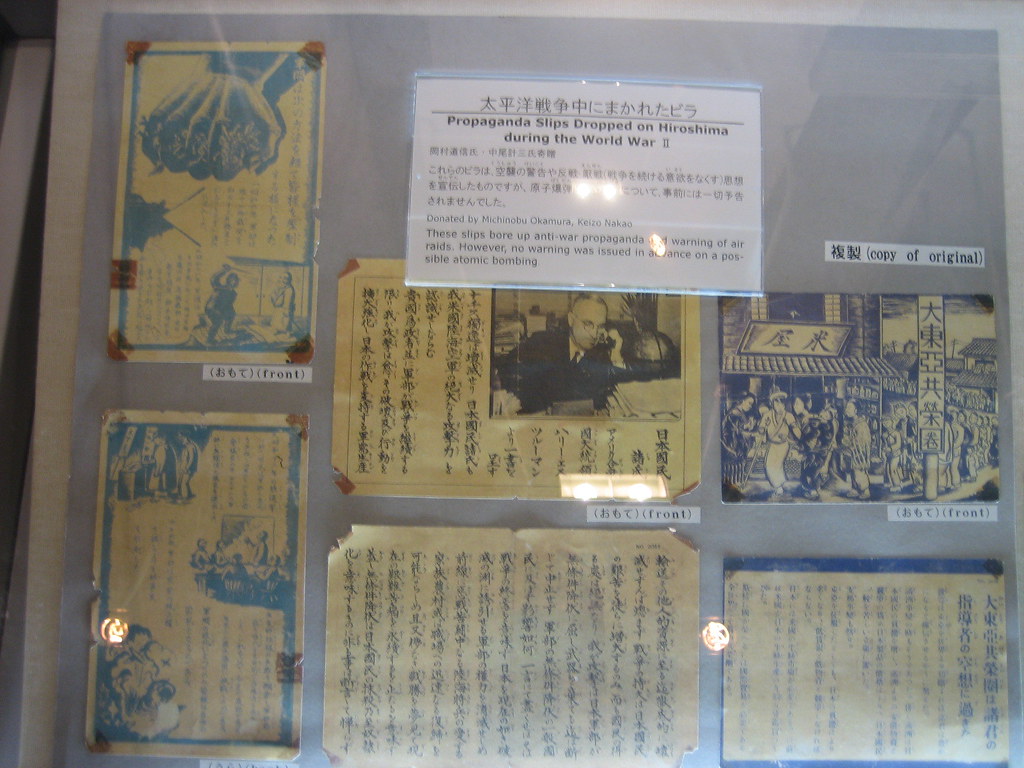
American propaganda leaflets dropped on Japanese cities during WW2. The leaflets states that there would be warnings given to people before bombing campaigns ... there was no warning giver before the atomic bomb was dropped.
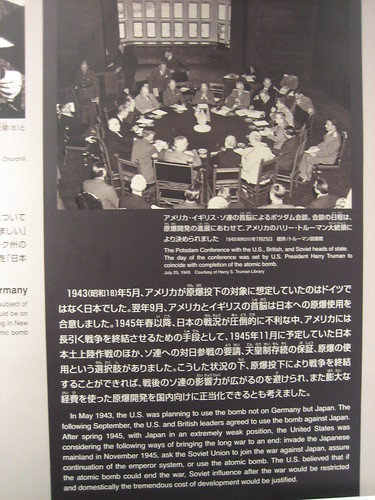
Potsdam Conference where the Soviet Union, US and British leaders met on July 25, 2005 the day of completion of the Atomic bomb. At this conference, an ultimatum was issues to Japan for its unconditional surrender. This ultimatum was rejected by Japan because they wanted to keep their emperor system governance.
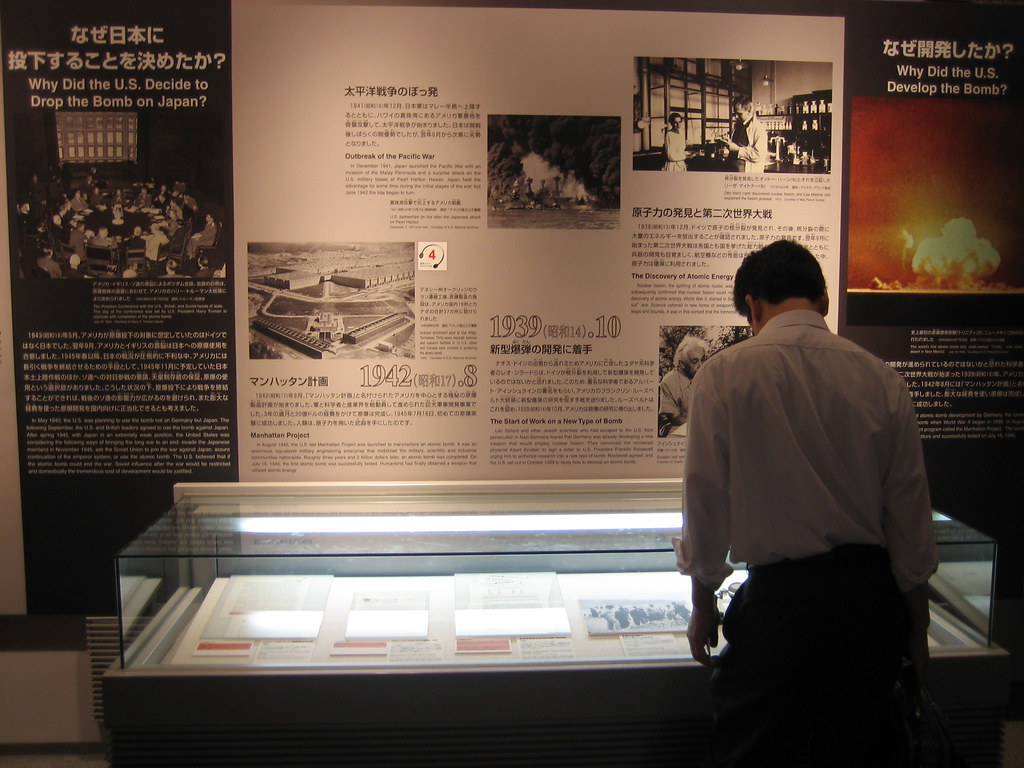
Why did the US decide to develop the bomb?
Some scientists/community leaders fearing Germany was close to developing this bomb convinced Albert Einstein to write a letter to the US president urging him to develop this bomb; the US president approved and thus the Manhattan Project was born.
Why did the US decide to drop the Atomic bomb on Japan?
1) They wanted to test the full effect of the bomb. For that reason certain cities were specifically left untouched by regular bombings.
2) They needed to justify to the American people the price of $2 billion spent on research to develop this bomb. Hence they felt a quick end to the war with the A-bomb would do it.
3) They wanted to minimize Soviet influence in Japan after the war. Therefore, they needed to end the war before the Soviets would invade Japan as agreed between Stalin and Truman in Feb. 1945 at the Yalta conference.
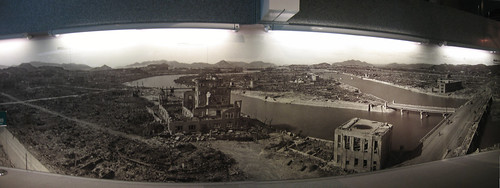
Hiroshima after the bombing. Everything was destroyed. The bomb exploded 600m above the hospital building seen in the center of the picture.
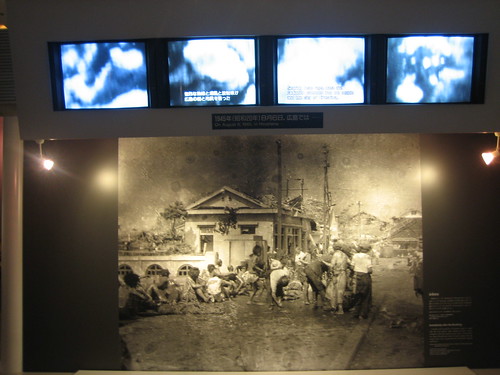
People after the bombing scrambled to survive. There was shortage of water and the dripping rains that came down were black.
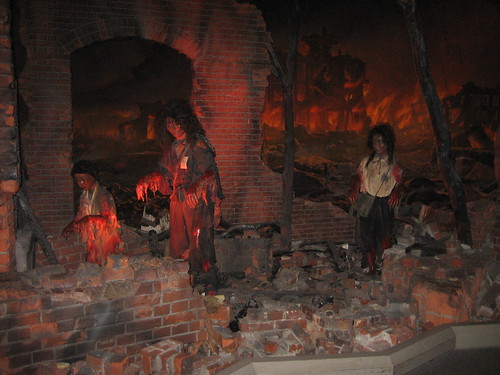
Recreation of the survivors at a bank after the bombing.
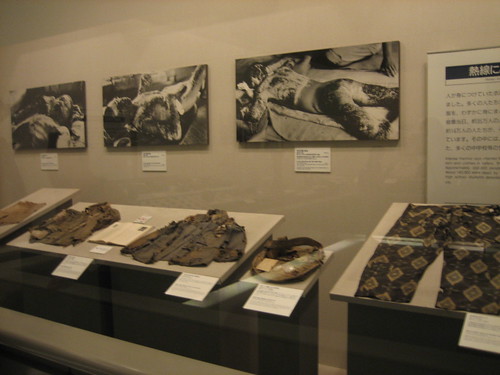
A victim with severe burns being treated at the hospital. Many people died from radiation at the hospitals not long after the bombing; doctors at first thought that the burns were from the explosion, but later realized that their condition was caused by something else.
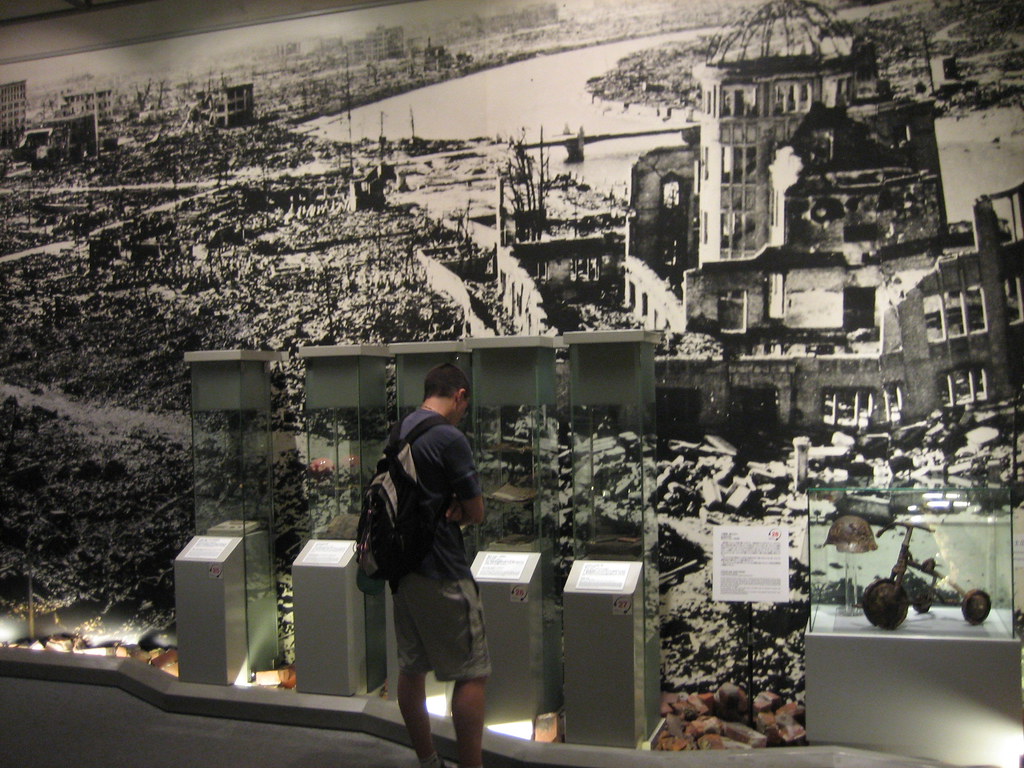
Images and stories of people after the bombing.
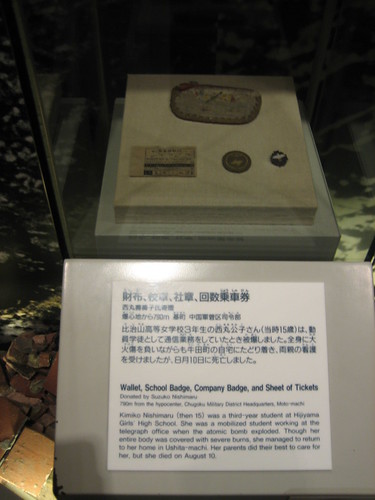
Click on the picture to read the story of a 15 year old school girl that died from the burns after the bombing.

Click on the picture to read an emotional story about a little kid, age 3, that died from severe burns shortly after the bombing.
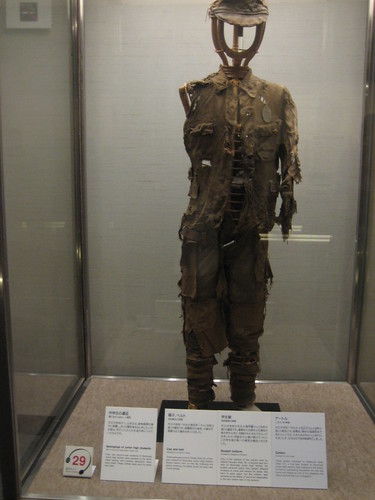
The remaining clothes of school kids that died from the Atomic bomb.
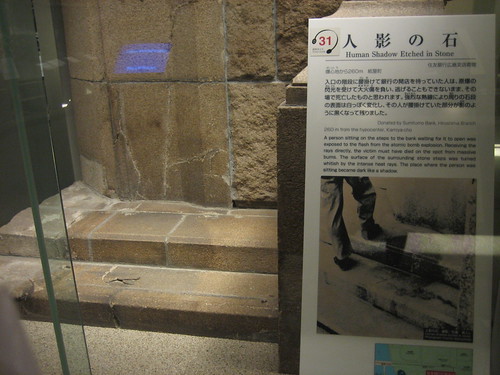
A permanently burned stain (shadow) into stone from a vaporized man that was sitting outside of the bank waiting for it to open at the time of the A-bomb.
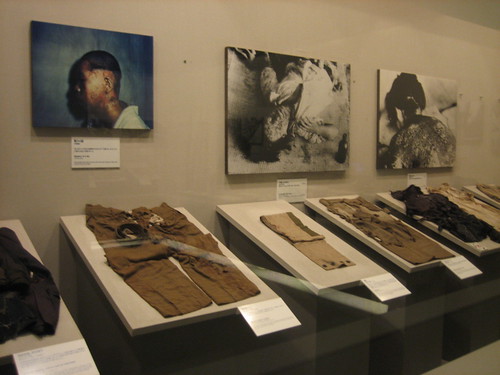
Another victim with severe burns.
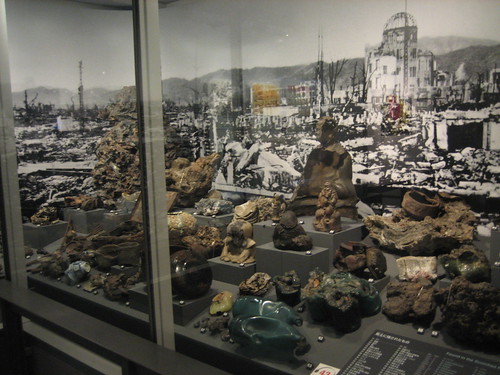
Pictures and artifacts showing the effect of the bombing and the radiation on the objects.
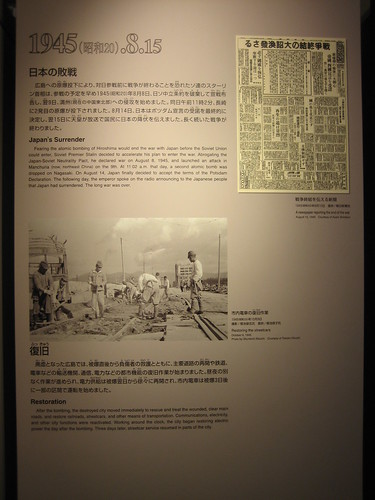
Japan surrendered on August 15, 1945 when the emperor announced it on the radio to the Japanese people. Soon after the reconstruction efforts began.
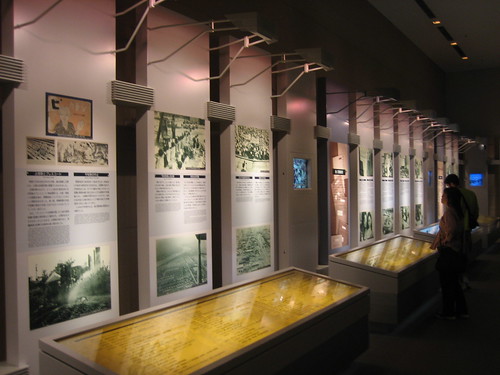
People worked around the clock in their efforts to restore the city. Their efforts were courageous and clearly paid off as the city is now thriving and a wonderful ambassador for peace and advocate for elimination of the Atomic weapons from the world.
American forces occupied Japan till 1951. It was forbidden to discuss about the A-bomb and all letters sent out were opened and checked by the Americans; because of this people in other parts of the country were not aware of the extent of the damage and suffering brought on Hiroshima. Soon after the Americans left there was a flood of books written and stories told of the bombing.
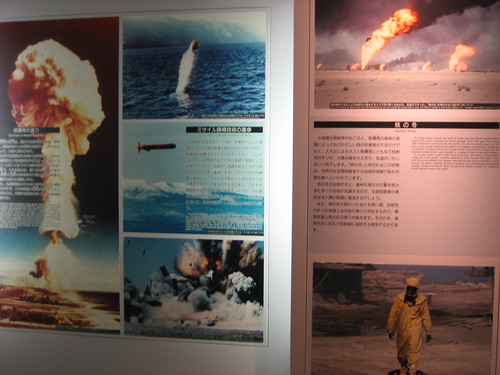
The atomic bomb, an incredibly deadly weapon unleashed upon the human race in 1945.
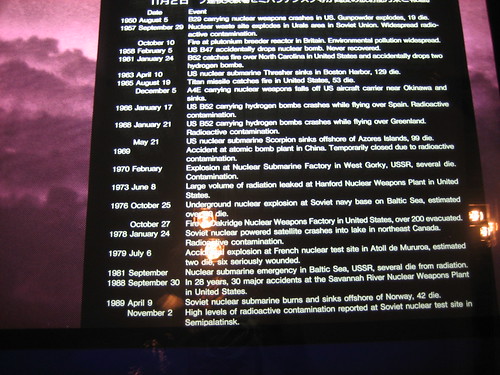
This is a list of Atomic weapon accidents; indicating how disturbing it is to have such a weapon in existence.
Tags
Japan Hiroshima Abomb Atomic bomb Story Potsdam WW2 war museum Peace Memorial Museum radiationUS
I write this post to inform you about Hiroshima, a city on which the world's first atomic bomb was dropped on August 6, 1945 destroying it and eventually killing an estimated 160,000 people: directly or through radiation.
The pictures and the information I present comes from the Hiroshima Peace Memorial Museum; to support this information the museum had actual letters, telegraphs, etc that were communicated between the US president, his supporting staff, scientists and other allies.
Ironically enough, if you are in Canada you can still catch a documentary playing now about Hiroshima on Sunday August 7 and Saturday 13 at 10pm ET on CBC.

American propaganda leaflets dropped on Japanese cities during WW2. The leaflets states that there would be warnings given to people before bombing campaigns ... there was no warning giver before the atomic bomb was dropped.

Potsdam Conference where the Soviet Union, US and British leaders met on July 25, 2005 the day of completion of the Atomic bomb. At this conference, an ultimatum was issues to Japan for its unconditional surrender. This ultimatum was rejected by Japan because they wanted to keep their emperor system governance.

Why did the US decide to develop the bomb?
Some scientists/community leaders fearing Germany was close to developing this bomb convinced Albert Einstein to write a letter to the US president urging him to develop this bomb; the US president approved and thus the Manhattan Project was born.
Why did the US decide to drop the Atomic bomb on Japan?
1) They wanted to test the full effect of the bomb. For that reason certain cities were specifically left untouched by regular bombings.
2) They needed to justify to the American people the price of $2 billion spent on research to develop this bomb. Hence they felt a quick end to the war with the A-bomb would do it.
3) They wanted to minimize Soviet influence in Japan after the war. Therefore, they needed to end the war before the Soviets would invade Japan as agreed between Stalin and Truman in Feb. 1945 at the Yalta conference.

Hiroshima after the bombing. Everything was destroyed. The bomb exploded 600m above the hospital building seen in the center of the picture.

People after the bombing scrambled to survive. There was shortage of water and the dripping rains that came down were black.

Recreation of the survivors at a bank after the bombing.

A victim with severe burns being treated at the hospital. Many people died from radiation at the hospitals not long after the bombing; doctors at first thought that the burns were from the explosion, but later realized that their condition was caused by something else.

Images and stories of people after the bombing.

Click on the picture to read the story of a 15 year old school girl that died from the burns after the bombing.

Click on the picture to read an emotional story about a little kid, age 3, that died from severe burns shortly after the bombing.

The remaining clothes of school kids that died from the Atomic bomb.

A permanently burned stain (shadow) into stone from a vaporized man that was sitting outside of the bank waiting for it to open at the time of the A-bomb.

Another victim with severe burns.

Pictures and artifacts showing the effect of the bombing and the radiation on the objects.

Japan surrendered on August 15, 1945 when the emperor announced it on the radio to the Japanese people. Soon after the reconstruction efforts began.

People worked around the clock in their efforts to restore the city. Their efforts were courageous and clearly paid off as the city is now thriving and a wonderful ambassador for peace and advocate for elimination of the Atomic weapons from the world.
American forces occupied Japan till 1951. It was forbidden to discuss about the A-bomb and all letters sent out were opened and checked by the Americans; because of this people in other parts of the country were not aware of the extent of the damage and suffering brought on Hiroshima. Soon after the Americans left there was a flood of books written and stories told of the bombing.

The atomic bomb, an incredibly deadly weapon unleashed upon the human race in 1945.

This is a list of Atomic weapon accidents; indicating how disturbing it is to have such a weapon in existence.
Tags
Japan Hiroshima Abomb Atomic bomb Story Potsdam WW2 war museum Peace Memorial Museum radiationUS
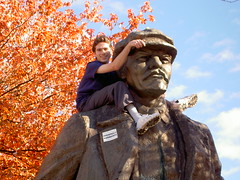

2 Comments:
WW2 affected my life...
Your post is so emotional.
I´m researching into the events which occurred for a collection of clothing for my studies. Thanks, this really helps, will be visiting hiroshima in July.
Post a Comment
<< Home